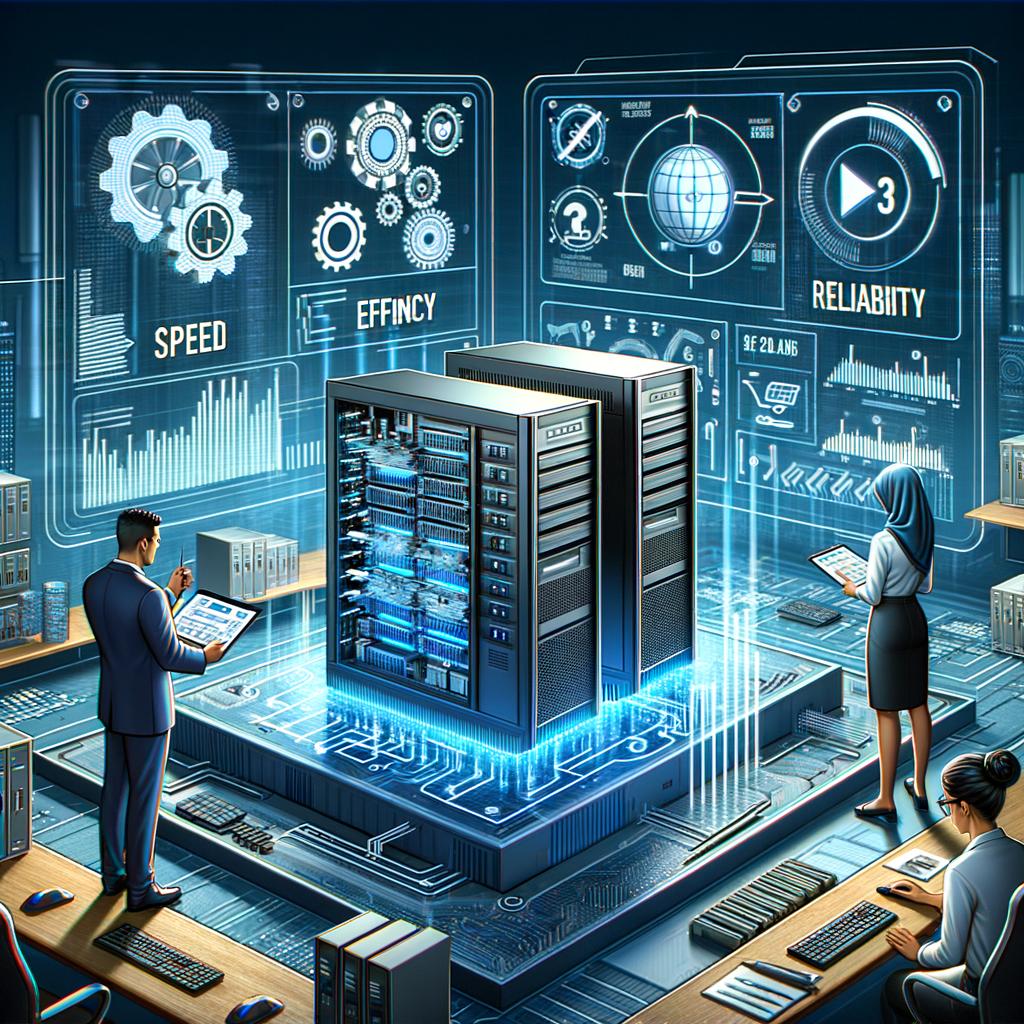From BERT to GPT: A Comparative Analysis

In recent years, language models, especially Transformer-based models, have irreversibly changed the landscape of Natural Language Processing (NLP). Our journey in this blog post will take us from the evolutions of Transformers to a deep dive into two significant models – BERT and GPT. BERT, or Bidirectional Encoder Representations from Transformers, revolutionized NLP with its unique bidirectional approach, addressing pretraining and fine-tuning issues in language models. As an alternative, the Generative Pretrained Transformer (GPT) uses a different strategy, focusing on a generative approach. In the following sections, we'll put "BERT vs GPT" in the spotlight, exploring their architecture, strengths, challenges, and how they compare in different tasks and factors, such as tokenization quality, training time, and resource consumption. This comprehensive comparison aims to help you make an informed decision, depending on your specific needs and objectives in the dynamic realm of NLP. Stay with us as we delve deeper into the innovative mechanisms of BERT and GPT, the paradigm shifters in the world of language models.
The Evolution of Transformers in NLP
The narrative around the development of transformer models in natural language processing (NLP) can be traced back to when researchers started exploring the remarkable potential of transformer-based language models. A profound architectural shift took place in the field, replacing recurrent neural networks (RNNs) and Convolutional Neural Networks (CNNs) with transformer models. Transformers, distinct for their attention mechanisms, proved more efficient in handling long sequences of data - a major challenge for RNNs and CNNs. Their ability to concurrently process entire sequences of data also stood them apart. These powerful features became instrumental in transforming the NLP landscape - setting a new precedent for model architecture in the field.
The effectiveness of transformers initiated an era of dominance in NLP, reflecting in the influential models that followed. For instance, the Bidirectional Encoder Representations from Transformers (BERT) vastly improved language understanding by utilizing the bi-directional capabilities of transformers. Generative Pretrained Transformer (GPT), leveraging transformers' capabilities, sought to revolutionize the field by gearing towards efficient text generation. As these models proliferated, they offered unprecedented improvements in language understanding, sentiment analysis, question-answering tasks, and more. The evolution of transformer models in NLP is a shining example of how redefining technology platforms can lead to significant advancements in a field. The successors of these first transformer models will continue to redefine the boundaries of what's achievable in NLP.
Understanding BERT: A Deep-Dive Into Its Mechanism

Exploring the details of BERT, or Bidirectional Encoder Representations from Transformers, provides insight into its innovative mechanism. BERT's architecture, a key focus area, consists of multiple Transformer blocks, designed to understand language in a more holistic manner. BERT surpassed traditional language models by enabling algorithms to consider context from not just the past but also the future words in a sentence, a radical shift away from the previous models that were primarily unidirectional.
A significant feature that sets BERT apart is its novel utilization of a bidirectional transformer. Conventionally, unidirectional transformers were favored in Natural Language Processing tasks as they processed preceding words in a sequence but ignored following ones. BERT, however, deviated from this norm. It introduced an innovative approach of deciphering all words within a sentence at the same time, both the preceding and succeeding ones. This allows it to capture context in a way unidirectional transformers cannot, thereby facilitating improved understanding and interpretation of text data.
BERT's unique feature of processing both left-to-right and right-to-left context of a word simultaneously in its layers essentially gives it the effect of "seeing in both directions." This bidirectional mechanism is quite revolutionary as it allows the model to understand the full context of a word by looking at the words that come before and after it in a sentence, ultimately improving its ability to understand and predict language patterns.
In contrast to traditional models that typically analyzed sentences linearly, BERT processes each word within the context of the entire sentence, thereby maintaining a comprehensive view of each expression. The model's approach significantly enhances performance across various Natural Language Processing tasks. Experts, including Jacob Devlin from Google AI, suggest that BERT's technique of training language representations bidirectionally is what gives it an edge in handling intricate linguistic contexts, using examples such as the word 'bank' in different sentences to illustrate its broad applicability.
Solving Pretraining and Fine-Tuning Issues with BERT
When discussing the complexities of language models such as BERT, it becomes vital to delve into the details on how this model tackles pretraining and fine-tuning issues. Most language models present challenges around these areas, which is where BERT stands out with its unique approaches. BERT, short for Bidirectional Encoder Representations from Transformers, reshapes the narrative of language processing by refining the intricacies of pretraining and fine-tuning.
One of the differentiating aspects of BERT is its Masked Language Model (MLM), which itself is a novel approach in NLP. This model allows BERT to understand the context of a word by looking at the words that come before and after it, essentially encoding a bidirectional context. While most traditional models would predict the next word in a sentence, BERT also considers the preceding words, resulting in a highly contextual understanding of language flow.
Secondly, BERT incorporates the technique of next sentence prediction in its mechanism. It is designed to understand and predict whether two sentences logically follow each other in a paragraph, further enhancing its comprehension of context and coherence. This technique puts BERT at a significant advantage in tasks such as answering questions, where determining the relation between two sentences is crucial.
Reflecting on BERT's approaches to pretraining and fine-tuning, it becomes evident how it lingers beyond traditional language models, addressing some of their prevalent issues. As BERT continues to reshape NLP and artificial intelligence, understanding the complexities behind its success paints a promising picture of its potential leading role in future developments.
Main Applications and Use Cases of BERT
Standing at the epicenter of Natural Language Processing, BERT's (Bidirectional Encoder Representations from Transformers) capabilities are extensive and assorted. Particularly, BERT excels in specific use cases and applications such as Named Entity Recognition, Sentiment Analysis, and Question-Answering tasks. Named Entity Recognition, for instance, involves identifying specific entities such as persons, organizations, locations in the text. BERT, with its deep contextualized word representations, establishes stronger entity and context associations. This makes it an invaluable tool for Named Entity Recognition, allowing more precise and accurate entity extraction, thus driving efficient and effective data mining processes.
BERT's application in Sentiment Analysis and Question-Answering tasks showcases its versatile prowess. Sentiment Analysis requires an understanding of language nuances to interpret sentiment accurately. Leveraging BERT's bidirectional training mechanism, it can better understand the context leading to more accurate sentiment prediction. In the domain of Question-Answering tasks, BERT, due to its depth of language comprehension, can answer complex, context-dependent questions with a considerably high accuracy rate. For example, its impact is quite evident in the performance of Google's search engine where BERT has been deployed to better understand search queries and provide accurate results. Thus, BERT’s ability to understand and process natural language effectively demonstrates its transformative uses and applications in a range of tasks within the realm of Natural Language Processing.
Unveiling GPT: How Does It Work?
The Generative Pretrained Transformer (GPT) represents an essential stride in the evolution of language models. It starts with an introduction to the basic functionality and architecture of GPT. Unlike traditional transformers, GPT has unique features that distinguish it. Its foremost characteristic is its focus on understanding and predicting the next word in a sequence, thereby making it inherently generative.
In terms of architecture, GPT stands out due to its innovative transformer model. Where most models use a transformer to both encode and decode input data, GPT solely relies on its decoder—a distinctive feature positioning it ahead of other models in text generation tasks. Its unique architecture focuses on exploiting patterns and structures inherent in the data, enabling it to predict subsequent words with higher accuracy.
A deeper analysis reveals that GPT is based on an unsupervised learning model that enables it to understand and generate human-like text. It learns to predict the following words in a sentence during the pretraining phase, dynamically compiling a knowledge base from which it generates human-like text. Its self-attention mechanism allows it to capture the sequence of words, making it proficient in predicting contextually relevant words.
To elucidate GPT's functionality further, consider its application in a typical task such as automatically writing an email. Using the patterns and structures it has learned, it will predict each subsequent word after the subject line, generating a contextually relevant and semantically accurate email. This example elucidates GPT's working mechanism, marking it as a powerful tool in language modeling and a significant step forward in the field of Natural Language Processing.
Differences Between GPT's Generative Approach and BERT's Discriminative

While both the Generative Pretrained Transformer (GPT) and the Bidirectional Encoder Representations from Transformers (BERT) have significant roles in the advancement of Natural Language Processing (NLP), they offer different approaches. GPT capitalizes on a generative model, which aims to predict or 'generate' the next word in a sentence. Here, the previous input sequence forms the context for the upcoming word. Naive Bayes spam filtering is a practical example of this: the model will predict if an email is spam or not based on learned patterns in the input sequence.
In contrast, BERT adopts a discriminative approach where it seeks to predict targets from given contexts. Unlike GPT, BERT can examine a context from both its left and right, thereby analyzing the complete context. With a discriminative viewpoint, BERT shines in detecting Named Entities and context-sensitive words, frequently applied in areas like Sentiment Analysis and Named Entity Recognition.
The impact of these different approaches on language understanding and generation cannot be understated. GPT's generative style is particularly practical in creating human-like text, as evidenced by the conversationally coherent responses generated by OpenAI's GPT-3 model. Incorporating long-term context into its generated text, it excels in text generation exercises.
On the other hand, BERT's discriminative method pays off in reading comprehension and language understanding tasks. Since it examines the entire context, BERT can precisely understand the relationship between words and their context, leading to more accurate predictions.
In summary, while GPT's generative approach appears particularly suited to text generation tasks, BERT's discriminative method offers a distinct advantage in tasks requiring nuanced understanding and interpretation of context. Deciphering which approach works better, generative or discriminative, would ultimately depend on the specific language processing task at hand.
Strengths , Challenges and Use Cases of GPT
The Generative Pretrained Transformer (GPT) carries an impressive suite of strengths. GPT is a standout choice in tasks that require text generation, such as content creation, chatbots, and machine translation. This can be attributed to its generative nature, wherein the model learns to predict the next word in a given sequence, effectively "writing" new text each time. Consider OpenAI's GPT-3, which was used to generate a complete essay that was published in The Guardian newspaper. GPT's capacity to produce human-like text is a clear testament to its strength.
However, tackling GPT is not without its challenges. While it excels in creative tasks, it falls short in certain aspects of language comprehension. It can inadvertently generate text that is nonsensical or factually incorrect due to its lack of context understanding. GPT-3, for instance, can generate news reports about events that never happened. Moreover, GPT trains on a massive amount of text data, making it resource heavy. Costs associated with computing power and electricity become considerable hurdles. Despite these challenges, the potential use-cases of GPT, from drafting emails to creating programming codes, offer exciting prospects in myriad fields. The important consideration is balancing the power and resource use of GPT against the task requirements and constraints.
Technical Comparison: BERT Algorithm vs GPT Algorithm

When comparing the technologies that drive BERT and GPT, there are distinct differences between the two. BERT, or Bidirectional Encoder Representations from Transformers, takes a unique approach. It uses bidirectional Transformers to process and understand language, which allows it to capture the meaning of a word based on all of its surrounding contexts. This approach has significantly improved language models and influenced the Natural Language Processing (NLP) field overall.
On the other hand, GPT, or Generative Pretrained Transformer, formulates language understanding in a different manner. It uses a unique transformer model that processes language from left to right. This unidirectional approach, while simpler, also restricts GPT to only use previous context in predicting the next word, unlike BERT, which uses past and future contexts.
One of the strengths of the BERT algorithm is its ability to handle tasks like Named Entity Recognition and Sentiment Analysis effectively. Its bidirectional approach shines brightly in these language-modeling tasks as the meaning of words often relies heavily on their surrounding contexts. This further emphasizes the effectiveness of the technology behind BERT.
Contrarily, GPT's strength lies in its text generation capabilities. Despite being restricted to using previous context, GPT has shown impressive results in creative writing or text completion tasks. The simplicity of its algorithmic design is its biggest asset, allowing it to excel in tasks where text generation is key.
When we appraise these algorithms' approaches to processing and understanding language, BERT's bidirectional approach and GPT's unidirectional approach both have unique benefits. BERT can better understand the semantics of a sentence due to its bidirectional nature, while GPT aids in completing paragraphs or writing intelligible sentences due to its text generation qualities.
In conclusion, both BERT and GPT offer a different set of strengths and weaknesses. Exactly which one to choose depends heavily on the task at hand and the specific requirements of the language-processing model in question. However, both BERT and GPT algorithms have made significant strides in the rapidly evolving field of Natural Language Processing, making them integral for future advancements in this area. The comparative analysis of these algorithms thus offers valuable insight into Transformer-based language models and their potential applications.
Analysis of Training Data Requirement: BERT vs GPT
To understand the training data demands of BERT and GPT, we need to observe their individual data needs. Bidirectional Encoder Representations from Transformers (BERT) demands a substantial amount of training data for efficient performance. It thrives on extensive corpus, usually spanning billions of words. For instance, the English language BERT model was trained on BooksCorpus and English Wikipedia that collectively have over 3.3 billion words.
Generative Pretrained Transformer (GPT), conversely, can generate coherent and contextually relevant language patterns even with less diverse and voluminous training data. This attribute, substantially influenced by its generative approach, can be credited from its training on a books corpus of 800 million words. This inclination towards less data-demanding training puts GPT ahead in scenarios with data-deficit.
BERT's approach, dependent on the broad and deep data set, enables it to pick up nuanced contexts and meanings, something very characteristic of natural languages. Numerous examples point towards BERT's adept handling of data, including understanding ambiguity in sentences and treating words based on their usefulness within a sentence rather than their standalone identity.
The data usage effectiveness of both models can be seen in distinct scenarios. BERT's high volume data approach becomes efficient where there's an availability of vast, varied, and high-quality data, often found in large organizations or specialized research environments. However, GPT makes an impact when there's limited data availability or a need for quick outputs, as found in many real-time applications or smaller organizations.
Given their distinct approaches to training data, both BERT and GPT excel under specific conditions and scenarios. Each has its place in the diverse landscape of Natural Language Processing applications based on specific functions and requirements.
Analyze the Natural Language Understanding: BERT vs GPT
In the realm of linguistic comprehension, the distinct nature of BERT and GPT's modal tasks sets both models apart. BERT comprehends language by gleaning meaning from both the context ahead and behind of each word, infusing a richer understanding of semantics and grammar in the task at hand. For instance, using BERT, a machine can determine the appropriate meaning of a word like "bat" in a given sentence, either as a wooden stick or a nocturnal animal, by analyzing the entire sentence context.
GPT, on the other hand, understanding language sequentially, from left to right. In doing so, it utilizes more significant attention mechanism to deduce meaning from context and allow more creativity, a feature that proves remarkably useful for tasks like text generation. Noted research from OpenAI demonstrates GPT's prowess in generating human-like text based on an initial prompt.
However, BERT's bidirectional approach lends it a valuable edge in certain scenarios. For instance, when handling tasks such as Named Entity Recognition, where syntactic understanding is crucial, BERT's method of drawing context from surrounding text elements has its merit.
Contrastingly, GPT's transformative abilities shine in cases where a more direct, generative approach is required. It thrives in tasks such as machine translation and text summarization, where holistic understanding of the text and creative application are key.
Both models offer nuanced performances based on their architectural design, training, and the nature of the task. However, it's their individual methods of interpreting and understanding natural language that defines their performance outcomes. Ultimately, the choice between BERT and GPT rests on the balance between depth of understanding and creativity needed for a particular Natural Language Processing task.
BERT vs GPT: A Look at Performance on Different Tasks

Looking at performance, both Bidirectional Encoder Representations from Transformers (BERT) and Generative Pretrained Transformer (GPT) demonstrate unique strengths and weaknesses when it comes to executing diverse Natural Language Processing (NLP) tasks. BERT, with its bidirectional understanding of language, consistently outperforms the GPT model in tasks like Named Entity Recognition and sentiment analysis. BERT's bidirectional capabilities allow it to analyze the context of a word based on its surroundings, resulting in impressively accurate text interpretation.
GPT, on the other hand, shines when it comes to tasks that involve text generation. Its unique generative approach allows GPT to generate human-like text by predicting the likelihood of a sentence following a given input. This makes it a go-to model for tasks like machine translation and story generation where it outperforms most of its competitors.
However, in the realm of Question-Answering (QA) tasks, the competition is fierce as both models have their respective strengths. GPT, with its intuitive text-generation ability, is often adept at crafting well-structured answers. In contrast, BERT's strong contextual understanding makes it better for interpreting complex queries.
It's important to note that while GPT's strength in text generation makes it seem superior in certain tasks, its consistency often takes a hit due to its lack of a bidirectional mechanism. This often makes its predictions less reliable despite them sounding pretty convincing.
On the other hand, BERT, despite its impressive performance, is not impervious to limitations. Its task-specific fine-tuning often becomes a significant drawback when dealing with tasks that require a broad understanding of language, an area where GPT finds its strength.
Clearly, the choice between BERT and GPT will heavily rest on the specific task at hand. Your aim should dictate the use of either model. While BERT excels in tasks that require precise language understanding, GPT's strengths lie in tasks that focus more on the generation of coherent and structured text. Both have their unique capabilities and the decision to use one over the other should be made based on what you aim to achieve.
How Quality of Tokenization Impacts BERT and GPT
The quality of tokenization can significantly influence both the efficacies of the Bidirectional Encoder Representations from Transformers (BERT) and Generative Pretrained Transformer (GPT) models. Tokenization is the process of breaking down text into smaller units or 'tokens', which can be words, phrases, or even smaller parts like syllables. Superior quality tokenization results in a more precise comprehension of the underlying text, aiding these models in generating more accurate predictions.
For instance, a poorly tokenized sentence may group together words that should have been separated, leading BERT or GPT to misunderstand the context. This misunderstanding can affect everything from named entity recognition, sentiment analysis, to text generation tasks. Conversely, a well-tokenized sentence can properly represent both the syntactic and semantic structures of the text. It can significantly boost models' efficiency by improving linguistic understanding, which thus accelerates the training process and improves performance on various tasks. Therefore, the thoroughness of your tokenization approach can greatly impact how these language models perform.
BERT vs GPT: Comparing Training Time and Resources
Training time and resource allocation is a noteworthy feature to compare when examining BERT and GPT. Both models differ significantly in this aspect. BERT requires a substantial amount of time and resources during the pre-training phase, which entails Masked Language Model and next sentence prediction. The volume of data and processing power necessary for this phase is immense, translating into higher costs and a lengthened timeline. Moreover, adjusting BERT to a new task during the fine-tuning stage can cause significant strain on resources.
In contrast, GPT follows a generative approach that saves time and resources to some extent. Despite having the advantage of quick adaptability to new tasks without requiring extensive re-training, GPT may take a long while to process lengthy sequences due to its autoregressive nature. The resources required for this are similarly substantial, mostly owing to the complexity and depth of the model.
A real-world example would be the pre-training phase of BERT that took four days to complete on 16 TPUs, Google's advanced deep learning hardware. However, GPT-2 has its own challenges with resource optimization, with a typical model training taking weeks on a V100 GPU. Hence, neither BERT nor GPT can claim a clear win in the aspect of training time and resource effectiveness.
Nevertheless, model selection heavily depends on the specific task, available funds, and time resources at hand. Therefore, while GPT may seem advantageous in terms of quicker fine-tuning and adaptability, BERT might appear superior for tasks that demand attention to contextual bidirectionality, despite its requirement for heavy computational resources.
Extrapolating the Future of NLP: Following BERT and GPT Evolution

Delving deeper into the realm of Natural Language Processing, the evolution and growth trajectories of BERT and GPT illuminate possible future developments. Both models have unveiled impressive learning techniques, which could potentially make them precursors of a new era in NLP. With state-of-the-art techniques and strides made in processing and understanding language, it is not far-fetched to imagine that their influence would reach beyond the academically theorized bounds.
Observing the advancements initiated by BERT and GPT, one could conjecture an exciting time ahead in the field of NLP. Their mechanisms have shown promising capabilities, especially in areas of fine-tuning language models. Adaptation of these pathways could lead to significant breakthroughs, potentially unraveling unforeseen techniques for solving complex linguistic tasks.
While there exists a myriad of possibilities for the future of NLP, several constraints must be acknowledged. These include computational and time costs, which are paramount considerations for both BERT and GPT. Balancing the cost factor with quality results shapes the roadmap for the development and implementation of better models in the future.
The ingenuity of both BERT and GPT cannot be overemphasized. Their mechanism of interpreting languages has flipped the script for Natural Language Processing. BERT’s risk-taking bidirectional approach and GPT’s unique generative capabilities hint at exciting prospects for language understanding tasks in the days ahead.
In conclusion, these transformative models provide tantalizing previews of the future ahead in Natural Language Processing. Meticulous scrutiny and deep understanding of these models, their strengths, and limitations, could aid in harnessing their full potential and steer the future course of NLP to unchartered territories.
Conclusion: Deciding Between BERT and GPT For Your Needs
In reflection, BERT and GPT manifest impactful breakthroughs in the facets of language understanding and processing, each with their unique edge. BERT’s bidirectional transformer model excels in tasks like named entity recognition and sentiment analysis. Conversely, GPT’s generative prowess shines through in areas of text generation and creative language tasks.
The decision between BERT and GPT, as inferred from our comparative analysis, largely banks on your specific needs and objectives. If requirements are largely analysis-centric, favoring detailed language understanding, BERT may serve as an optimal choice.
However, for projects requiring creative text generation – GPT emerges as the robust choice. Its generative approach and architecture lend itself to creativity, suitable for tasks such as chatbots or story-telling.
The training data required, algorithm performance, and the cost-effectiveness of each model also influence the final decision. Hence, one must take into account the resources available and the efficiency of data usage.
Important to note too is the role of effective tokenization. It can greatly enhance both BERT and GPT's efficiency and impact the quality of results, implying it must be a point of consideration.
Lastly, the remarkable advancements by BERT and GPT in NLP shows promising prospects for the future of this field. The choice you make today may not only influence your current project but also shape the trajectory of your future endeavors!
